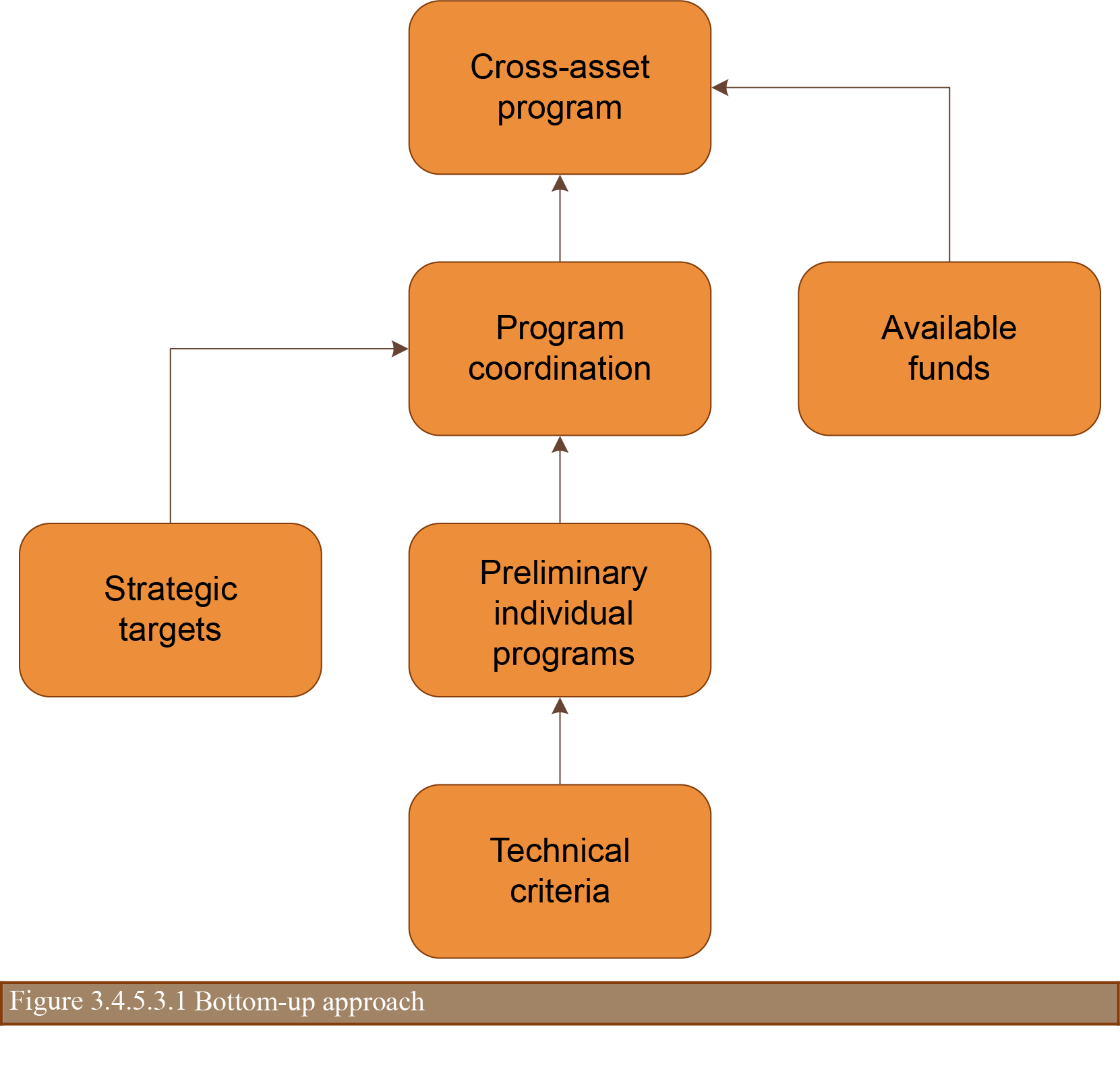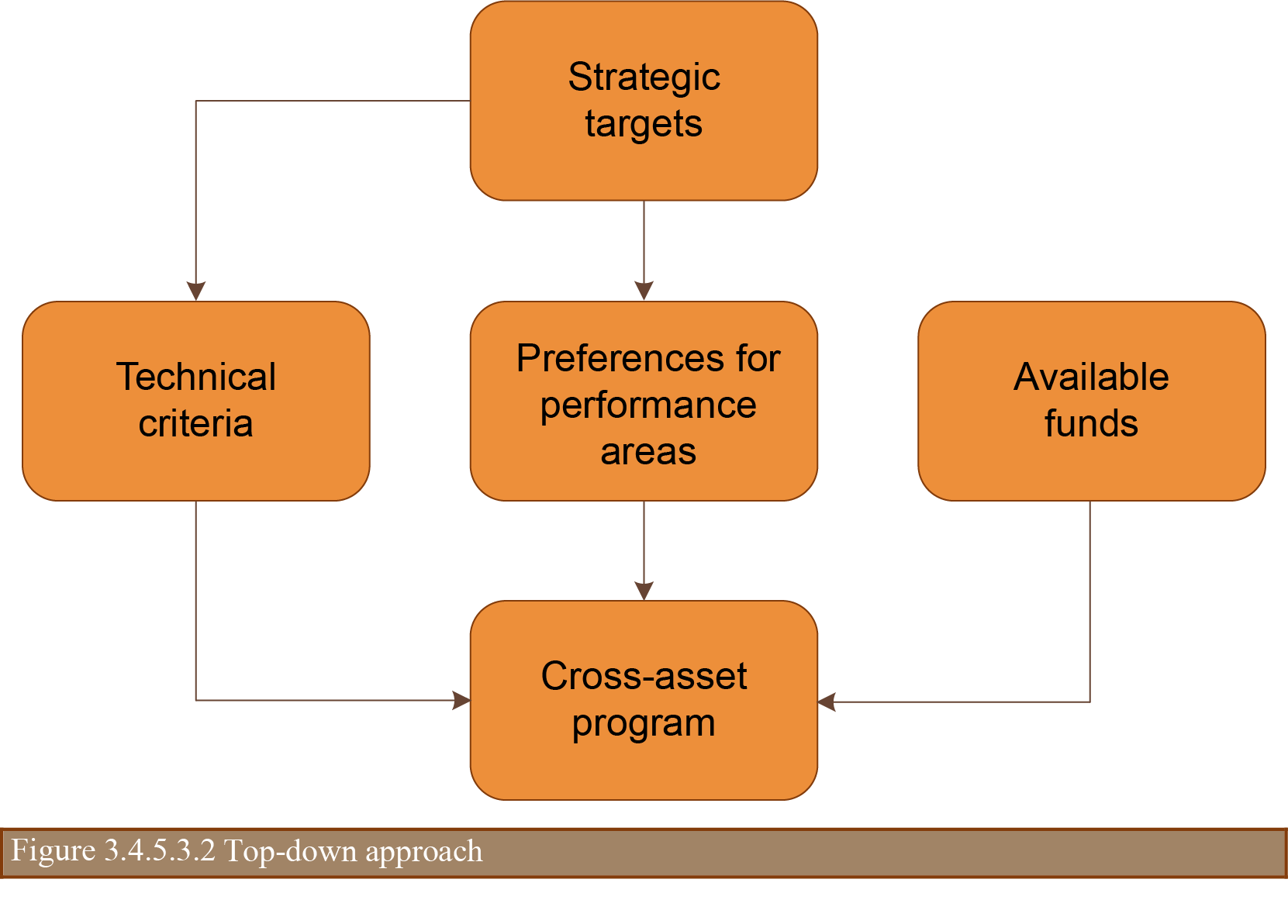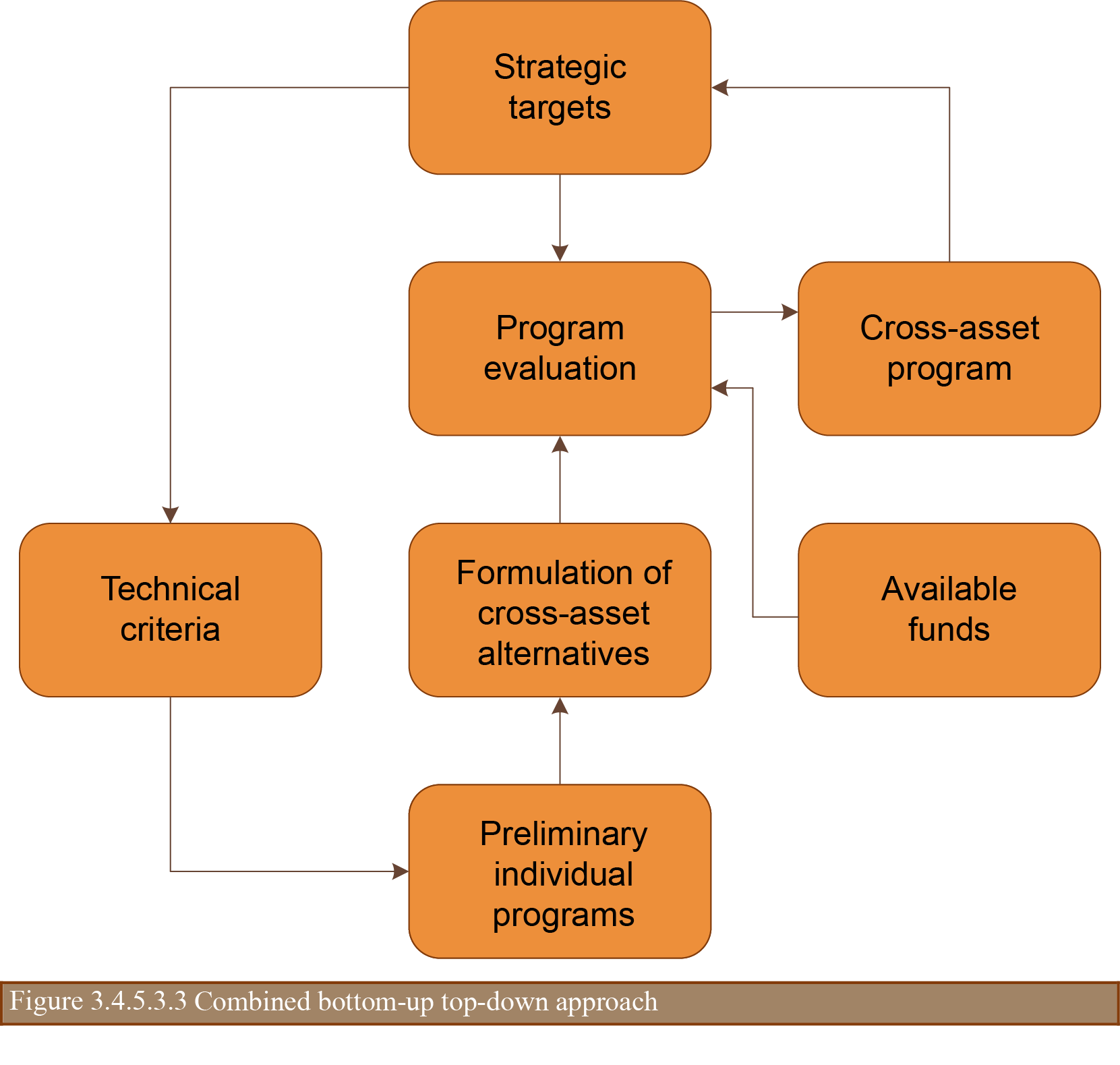
Asset Management Manual
A guide for practitioners!

Asset Management Manual
A guide for practitioners!
As mentioned previously, the ENR PROCROSS project identified the following approaches to cross-asset allocation as part as the asset management practice in Europe:
Bottom-up approach. This first method, portrayed in figure 3.4.5.3.1, is strongly influenced by the technical assessment of individual groups of assets / projects. Usually, each single group is analyzed separately by specific management systems that facilitate selection of appropriate alternatives under a certain number of given monetary or non-monetary preconditions.

The cross-asset process is usually not carried out at this application level, but the results can be used in a subsequent process of “coordination” across the individual groups. This process recalls the strategic objectives and targets, and may alter significantly the technically optimal solutions originally found.
The comprehensive appraisal of asset technical need constitutes the main advantage of the bottom-up approach. However, this feature represents also its main weakness since the focus on technical aspects leave the strategic objectives only rudimentarily considered.
Top-down approach. According to PROCROSS definitions, a top-down approach (Figure 3.4.5.3.2) is based on high-level, central decisions that consider the road network as a whole. It assumes that the overall performance of the network can be improved if its various assets / attributes are addressed concurrently rather than on a single basis.

The application of a top-down approach requires a deep understanding of the performance of the network, in order to give preference to those programs that better contribute to achieve the desired or feasible strategic targets.
A top-down approach provides clear and comprehensive criteria for analyzing assets at the technical level. However, this does not imply that engineering considerations are applied to the necessary extent, which increment risks related to achieving the levels of service pursued.
Combined approach. A combined bottom-up top-down approach, as represented in figure 3.4.5.3.3, entails the evaluation of the technical results of single assets in terms of the organization’s strategic targets. A critical issue for this approach is conciliating the strategic and the engineering requirements.

In the combined approach, the cross-asset allocation process usually occurs at an intermediate level between the strategic and the project levels. Under this approach, one the main objectives of works programming consists in harmonizing the strategic targets and the technical specifications by finding an optimal point that maximizes the fulfillment of the strategic objectives while reducing as much as possible the risk associated with the actual level of service provided. This is not an easy task as projects often do not comply with strategic criteria because they come as a result of a prioritization / optimization process that relies mainly on simple ranking and not from a network-wide performance analysis.